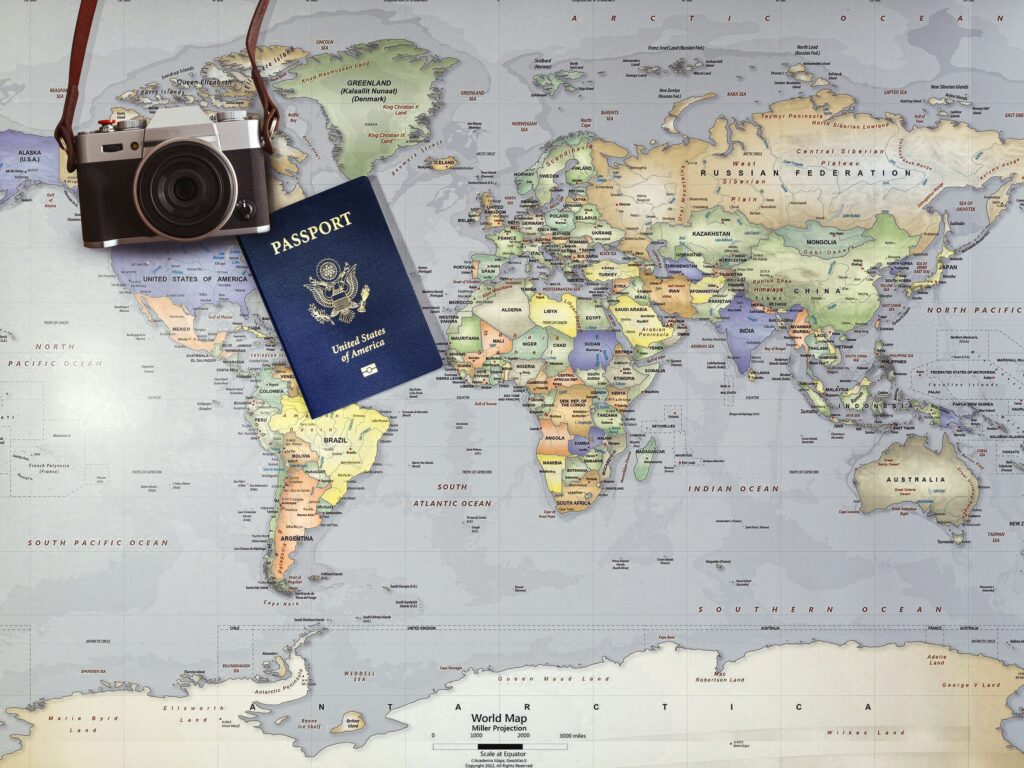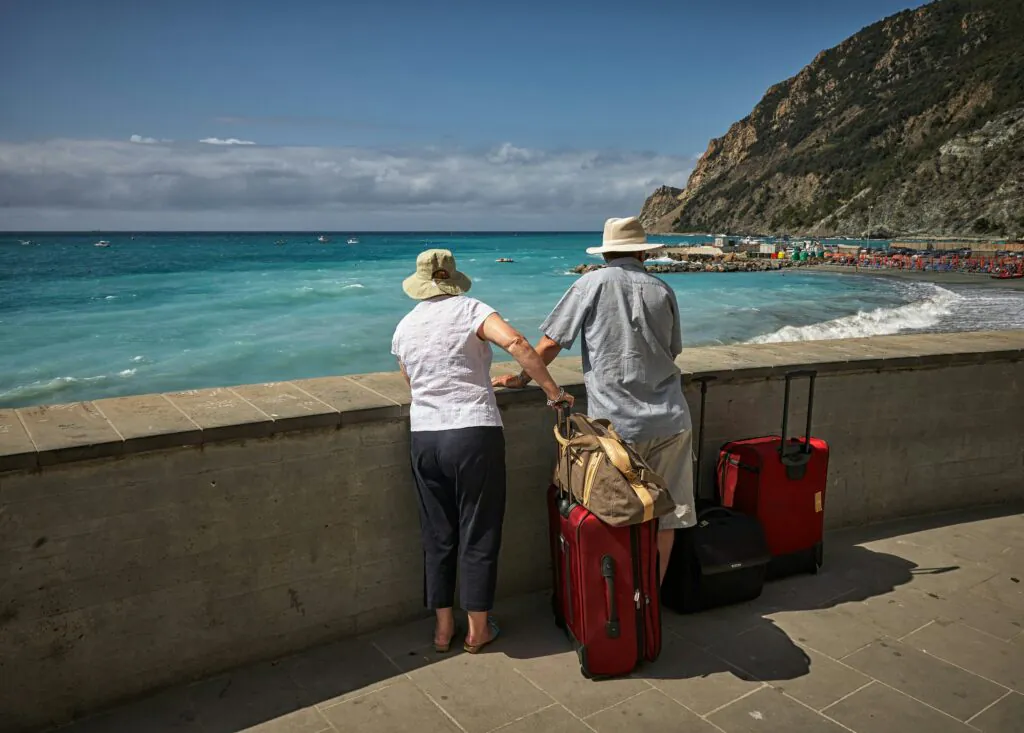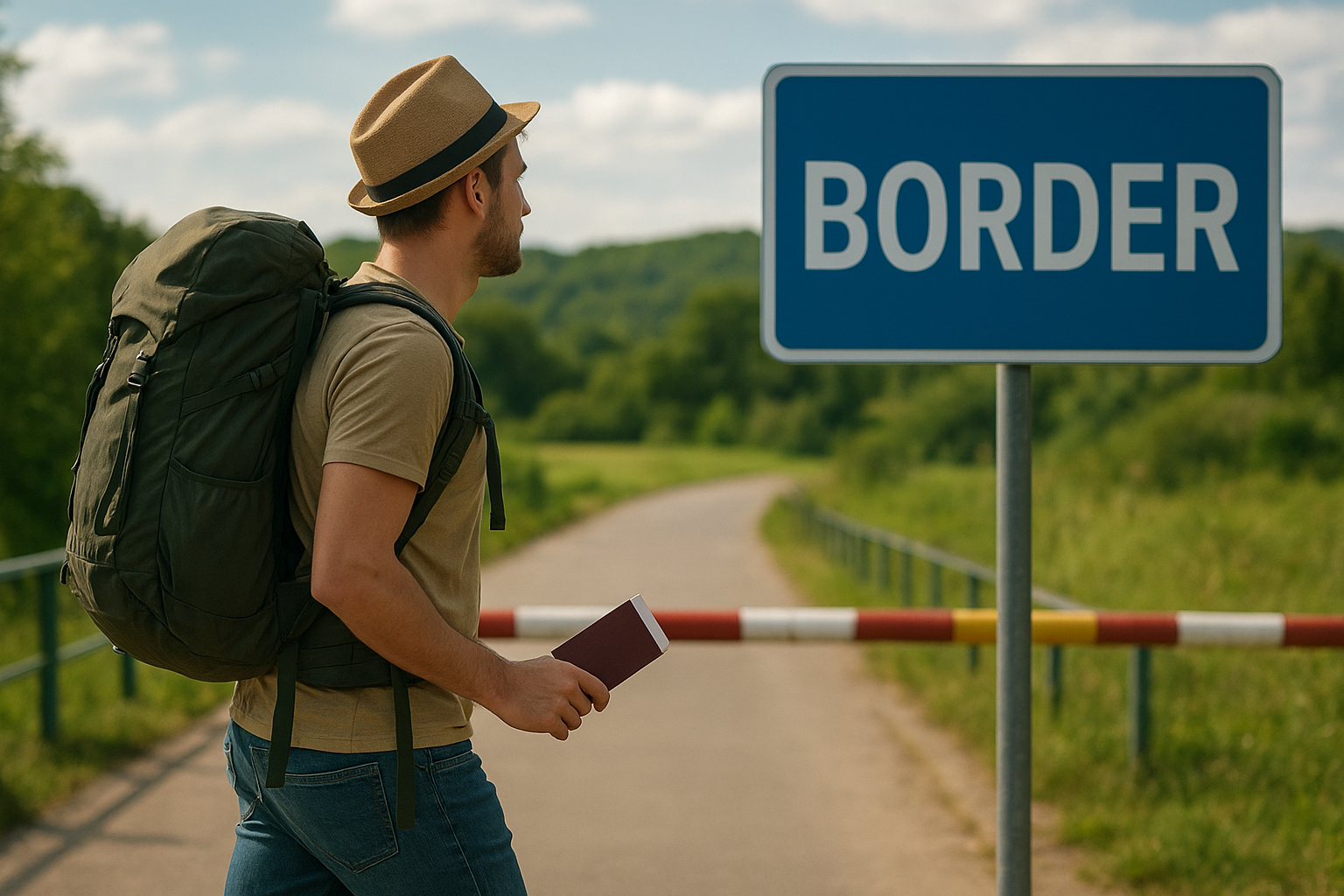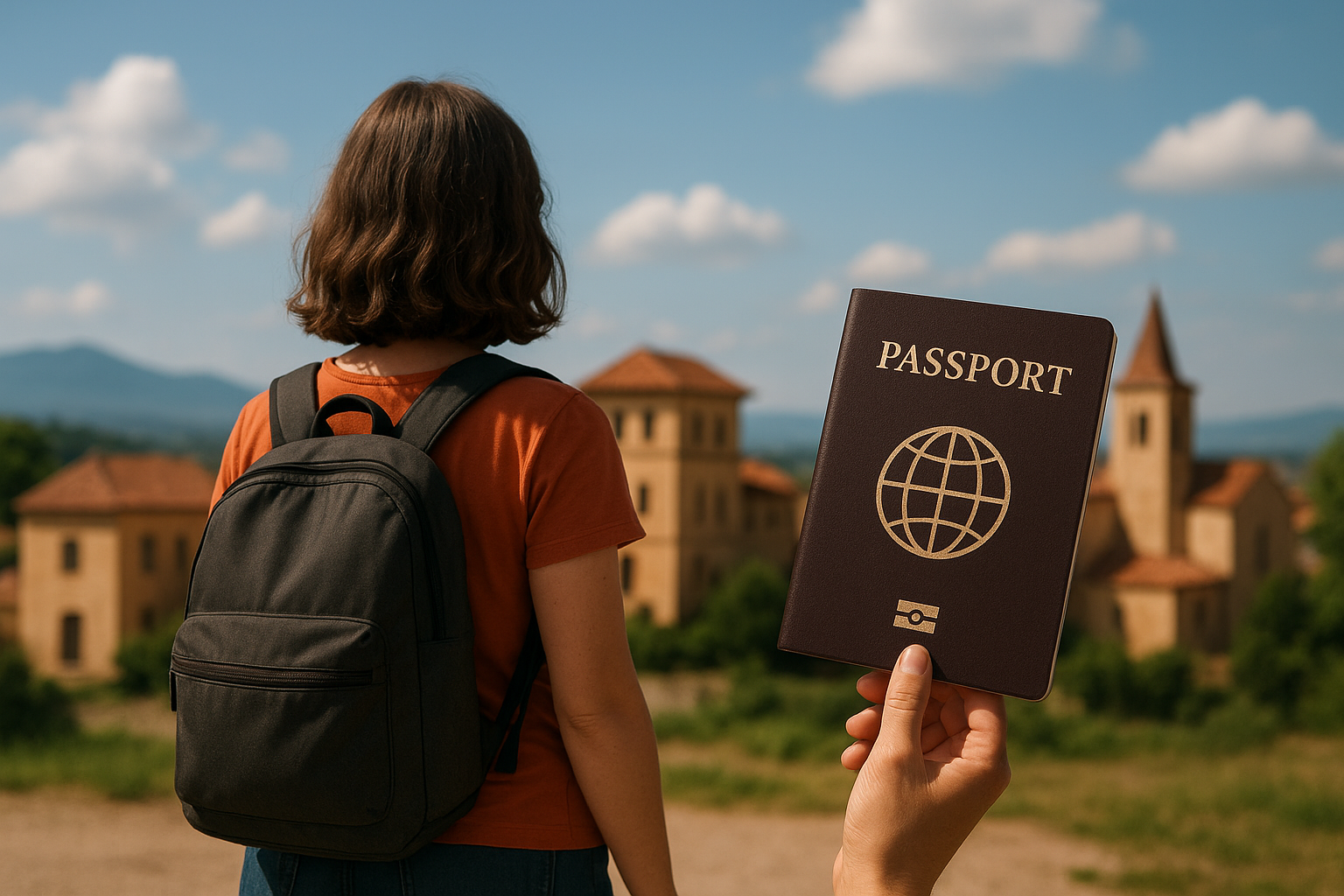Retirement on the Move: A Guide to Visas for Retirees and Long-Term Travelers
Retirement doesn’t have to mean settling into one place forever. For many, it’s the perfect time to explore the world on their own terms, trading familiar routines for new experiences, better weather, or a lower cost of living. But if you’re planning to spend months or years abroad rather than just a few weeks, you’ll quickly run into the limitations of tourist visas: short stays, border runs every few months, no access to local healthcare, and constant uncertainty about your legal status.
Enter retirement visas, a pathway that many countries offer specifically for retirees and financially independent individuals who want to establish legal residence without working locally. These programs provide stability, benefits, and the freedom to truly settle into life abroad rather than constantly watching the calendar.
Why Retirement Visas Deserve Your Attention
Traditional tourist visas work fine for short trips, but they’re not designed for people who want to actually live somewhere. Popular destinations like Portugal, Thailand, Spain, Ecuador, Indonesia, Ireland, and Mexico all offer retirement visas, each with its own requirements and benefits.
What makes these visas particularly attractive is what they offer beyond just permission to stay. Depending on the country, you might gain access to public healthcare systems, qualify for senior discounts on everything from utilities to entertainment, import your belongings without heavy duties, and most importantly, have a clear path toward permanent residency or even citizenship.
For digital nomads and remote workers, the line between retirement visas and work permits can get blurry. Some retirement programs explicitly allow remote work for foreign companies, while others prohibit any form of income-generating activity. The key is understanding exactly what each visa permits before you commit.
What Countries Actually Want From Retirement Visa Applicants
Most retirement visas require proof of monthly income, health insurance, and a clean background check. But the specifics vary dramatically from one country to another. Here’s what you’ll typically need to prove:
Financial Stability: This is the big one. Countries want assurance that you won’t become a burden on their social systems. Some require proof of pension income (Costa Rica asks for $1,000 monthly), while others accept passive income from investments, rental properties, or savings. The Portugal D7 Visa income requirements for the main applicant are at least €870 per month, making it one of the more accessible European options.
Health Coverage: Private health insurance is almost always mandatory, and some countries require medical examinations to ensure you don’t have conditions that would strain their healthcare system. The quality and cost of local healthcare should factor heavily into your decision.
Clean Record: Criminal background checks from your home country are standard. This usually means obtaining a police certificate, having it officially authenticated (often through apostille), and translating it into the local language.
Proof of Accommodation: You’ll need to show where you plan to live, whether through a rental lease, property purchase documents, or sometimes even a letter from someone hosting you.
Age and Status: Surprisingly, not all “retirement” visas actually require you to be retired or reach a specific age. Despite the name, retirement visas aren’t just for those on a pension. These visas are sometimes known as ‘passive income visas’ or ‘visas for those of independent means’. If you can prove financial independence, you might qualify even in your 40s or 50s.

The Global Landscape of Retirement Visas
Let’s explore what different regions and countries offer. Each has carved out its own approach to attracting retirees, shaped by local economic needs, immigration policies, and cultural attitudes toward foreign residents.
Latin America: Affordable Living with Generous Benefits
Costa Rica remains a perennial favorite, particularly its Pensionado program. The requirements are straightforward: prove you receive at least $1,000 monthly from a pension, annuity, or other guaranteed lifetime income source. What you get in return includes access to the national healthcare system (CAJA), substantial discounts for retirees across many services, and a path to permanent residency after three years.
The Rentista visa offers an alternative for those not yet drawing a pension. You’ll need to show higher income levels (either $2,500 monthly or a $60,000 deposit), but you gain similar benefits. The country’s political stability, established expat communities, and “pura vida” lifestyle continue to draw retirees despite rising costs in popular areas like the Central Valley and Pacific coast.
Panama‘s Pensionado visa is equally popular and arguably even more generous with its discount program. The same $1,000 monthly pension requirement gets you permanent residency from day one, plus discounts that can reach 25% on medical services, 50% on entertainment, 30% on public transport, and 15% on hospital services. For retirees who prioritize tangible financial benefits, Panama delivers.
Ecuador has quietly built a reputation as a retirement haven with lower thresholds than its neighbors. The pensioner visa requires just $800 monthly income, and the country’s use of the US dollar eliminates currency exchange concerns for Americans. Cities like Cuenca and Quito offer spring-like weather year-round, strong expat infrastructure, and healthcare that punches above its weight in quality.
Europe: Culture, Healthcare, and Schengen Access
Portugal‘s D7 visa has become the gold standard for European retirement visas, offering excellent value and quality of life. You’ll need to meet minimum passive income requirements (€820 per month) and show proof of accommodation to get the visa, though recent updates put the requirement at €870 monthly as of 2025. If the foreigner’s family members get visas too, the income for a spouse or parent is 50% of the investor’s and 30% for a child.
What makes Portugal especially appealing is the combination of factors: access to Europe’s excellent healthcare systems, the ability to travel throughout the Schengen Zone, a path to EU citizenship after five years, and increasingly, a community of remote workers and international residents. The Non-Habitual Resident tax regime has also made Portugal attractive for pension taxation, though regulations continue to evolve.
Spain‘s Non-Lucrative Visa targets a similar demographic but with higher income requirements. You’ll need to prove approximately €2,400 monthly income (or roughly €28,800 annually) for a single person, plus proof of private health insurance and accommodation. The trade-off is living in Spain itself: world-class culture, cuisine, climate, and lifestyle. Major cities like Madrid and Barcelona offer urban sophistication, while regions like Valencia or Andalusia provide more affordable Mediterranean living.
Italy‘s Elective Residence Visa operates on similar principles but with famously complex bureaucracy. The financial requirements aren’t explicitly set at a national level, which means consulates have some discretion. Generally, you’ll need to prove income well above Italy’s minimum wage. What you gain is the opportunity to live in one of the world’s most culturally rich countries, with access to Italy’s national health service and the European lifestyle many dream about.

Asia: Exotic Destinations with Unique Challenges
Thailand has long attracted retirees with its combination of tropical climate, low cost of living, and good healthcare in major cities. The retirement visa requires applicants to be 50 or older and maintain either 800,000 baht (about $23,000) in a Thai bank account or prove 65,000 baht ($1,900) monthly income. The visa must be renewed annually, and recent years have seen increasingly strict enforcement of financial and insurance requirements.
The appeal remains strong: excellent private hospitals in Bangkok and Chiang Mai, sophisticated expat infrastructure, tropical beaches, rich culture, and the ability to stretch your retirement funds. However, political uncertainty, visa rule changes, and the requirement to keep funds in Thai banks (earning minimal interest) are considerations.
Malaysia‘s MM2H (Malaysia My Second Home) program was once considered one of Asia’s best retirement visa schemes, but dramatic changes in recent years have made it less accessible. Requirements now include significantly higher financial thresholds, mandatory property purchases in some tiers, and stricter income verification. For those who qualify, Malaysia offers modern infrastructure, widespread English, excellent healthcare, and a stable multicultural environment.
Indonesia offers retirement options for those 60 and older through its KITAS retirement permit. Requirements include proof of income, health insurance, local guarantor, and often renting or purchasing property. Bali remains the top destination for foreign retirees, offering spiritual culture, natural beauty, and affordable living, though infrastructure outside major tourist areas can be challenging.
Other Notable Options Worth Exploring
Greece introduced a financially independent person visa that requires €2,000 monthly income. With stunning islands, rich history, Mediterranean lifestyle, and lower costs than many EU countries, Greece appeals to those seeking European residence without the higher thresholds of Spain or France.
Mexico‘s Temporary and Permanent Resident visas for retirees remain popular, especially among North Americans. The proximity to the US and Canada, favorable climate in places like San Miguel de Allende and Playa del Carmen, excellent value for money, and established expat communities make Mexico a natural choice. Requirements vary by consulate but generally require proof of monthly income around $2,500 or savings of about $40,000.
Colombia has quietly emerged as a retirement destination with its pensionado visa requiring only $750 monthly income. Cities like Medellín and Cartagena offer modern amenities, spring-like weather, and increasing safety compared to previous decades.
The Real Costs Beyond Visa Fees
When calculating whether you can afford to retire abroad, the visa application fee is actually one of the smaller expenses. A more complete picture includes:
Initial Setup Costs: Document authentication, translations, lawyer fees, medical exams, background checks, and visa application fees can easily total $2,000-5,000 before you even arrive.
Moving and Shipping: Transporting your belongings internationally costs thousands, or you can start fresh and furnish a place locally. Many retirees split the difference, shipping essential items and buying locally.
Health Insurance: Private international health insurance can run $200-800 monthly depending on age, coverage level, and destination. Some countries include visa holders in public healthcare, dramatically reducing this cost.
Housing: While many retirement destinations advertise low costs of living, desirable neighborhoods in popular cities can be surprisingly expensive. Research specific neighborhoods rather than national averages.
Currency Risk: Your pension or passive income is probably in dollars, euros, or pounds. If you retire to a country with a different currency, exchange rate fluctuations can significantly impact your purchasing power over time.
Annual Renewals and Compliance: Many visas require annual renewals, updated documentation, and potentially ongoing legal fees. Budget for $500-1,500 annually for visa maintenance.

What Makes Retirement Visas Different From Other Options
Understanding how retirement visas compare to alternatives helps clarify whether they’re right for you.
Tourist Visas are simple and require no financial proof, but they offer no stability, typically limit stays to 90-180 days, provide no path to permanent residency, and explicitly prohibit any work, including remote work in many cases.
Digital Nomad Visas are specifically designed for remote workers and typically require proof of employment or business income. They’re often more flexible about income sources than retirement visas but may not offer the same discounts, healthcare access, or long-term residency paths.
Investment Visas (Golden Visas) can lead directly to residency or citizenship but require substantial capital investment, typically €250,000-€500,000 in real estate or other approved investments. They’re powerful tools for those with significant wealth but inaccessible for average retirees.
Family/Spousal Visas work if you have family ties in your target country but come with their own complex requirements and don’t provide the independence of a retirement visa.
The Application Process: A Realistic Timeline
Applying for a retirement visa isn’t quick. Here’s what a realistic timeline looks like:
Months 6-4 Before Departure: Research countries, decide on top choices, begin gathering documents. Order criminal background checks, start working with lawyers or immigration consultants in target countries, begin organizing financial documents.
Months 4-2 Before Departure: Get documents authenticated (apostilled), translated, and certified as required. Open bank accounts if needed. Secure health insurance that meets requirements. Book initial accommodations or begin property search.
Months 2-0 Before Departure: Submit visa application at consulate or embassy. Processing times vary wildly, from two weeks to six months. Some countries allow you to enter on a tourist visa and convert it in-country; others require approval before arrival.
After Arrival: Register with local authorities, obtain residence cards, register for healthcare, set up utilities, begin the process of settling in. Initial adjustment period typically takes 3-6 months.

Common Pitfalls and How to Avoid Them
Underestimating Currency Impact: That $1,000 monthly requirement seems easy to meet when you’re planning in your home currency. But after exchange rates, transfer fees, and currency fluctuations, your actual spending power might be less than expected.
Ignoring Healthcare Limitations: Public healthcare access sounds great until you realize the nearest quality hospital is two hours away or doesn’t have English-speaking doctors. Research actual healthcare facilities in the specific area where you’ll live.
Misunderstanding Work Restrictions: “No local employment” seems clear, but what about consulting for your former employer remotely? Managing rental properties back home? Earning investment income? These gray areas can jeopardize your visa status if not properly clarified.
Assuming Visa Rules Stay Stable: Malaysia’s MM2H changes shocked thousands of existing visa holders. Thailand regularly adjusts requirements. Spain and Portugal have modified their programs multiple times. Build flexibility into your plans.
Overlooking Tax Obligations: Moving abroad doesn’t necessarily end your tax obligations at home. Americans, for instance, must file US taxes regardless of where they live. Research tax treaties and obligations in both countries.
Making It Work: Strategies From Successful Retirees
After speaking with dozens of retirees who’ve successfully navigated these programs, several patterns emerge:
Start with Trial Runs: Before committing to a retirement visa application, spend 2-3 months in your target location during different seasons. The place you love during dry season might be unbearable during monsoon season.
Choose Less Obvious Locations: Everyone flocks to capital cities and tourist hotspots, driving up costs. Secondary cities often offer better value, more authentic culture, and easier integration into local life. Consider Guanajuato instead of Mexico City, Braga instead of Lisbon, Chiang Rai instead of Chiang Mai.
Join Expat Communities Early: Not to create an expat bubble, but for practical support. People who’ve already navigated the visa process, found good doctors, and learned local quirks become invaluable resources. Facebook groups, Internations chapters, and local meetups help tremendously.
Maintain Financial Buffers: Emergency funds matter more when you’re thousands of miles from home. Aim for 12-18 months of expenses in accessible savings, separate from your visa requirement funds.
Learn the Language: Even basic proficiency in the local language transforms your experience. You’ll access better services, pay local prices, make genuine friendships, and handle bureaucracy more effectively.
Retirement Visas for Digital Nomads: Where They Intersect
If you’re a digital nomad approaching traditional retirement age, or simply looking for more stable residency than typical nomad visas offer, retirement visas might be surprisingly relevant.
Some retirement visas explicitly permit remote work for foreign clients or companies. Portugal’s D7 visa, for instance, works well for remote workers with sufficient passive income or savings. Spain’s non-lucrative visa technically prohibits work but doesn’t prevent you from earning investment income or rental revenue.
The advantages for nomads include longer validity periods than most digital nomad visas, clearer paths to permanent residency, better integration into local healthcare and systems, and potentially lower income requirements than investor visas.
However, you’ll need to carefully verify what “not working locally” actually means. Can you freelance for international clients? Run an online business? Do consulting work? The answers vary by country and sometimes by individual immigration officer interpretation.
The Future of Retirement Visas: Trends to Watch
Several trends are reshaping the retirement visa landscape:
Rising Thresholds: As inflation affects countries worldwide and more remote workers seek residency options, financial requirements are creeping upward. Portugal and Spain have both increased minimums in recent years.
Healthcare Requirements Tightening: Post-pandemic, countries are more focused on ensuring foreign residents won’t strain healthcare systems. Expect more stringent insurance requirements and health screening.
Digital Nomad Overlap: Some countries are creating hybrid visa categories that blend retirement visa concepts with digital nomad provisions, recognizing that many remote workers seek long-term stability.
Tax Incentives Evolving: Programs like Portugal’s Non-Habitual Resident tax status have attracted global attention but also criticism. Expect ongoing changes as countries balance attracting wealthy residents with political pressure about fairness.
Citizenship Timelines: The path from temporary residence to citizenship varies dramatically. Countries struggling with population decline (like Portugal, Greece, and Italy) may create faster pathways to attract permanent residents.
Your Retirement Visa Checklist
Before you dive into applications, use this framework to evaluate each option:
Financial Feasibility
- Can I comfortably meet the minimum income requirement with room to spare?
- Have I accounted for currency fluctuations?
- What’s my emergency fund situation?
- Can I maintain the required income/savings for the full visa period?
Healthcare Reality
- What’s the actual quality of healthcare where I plan to live (not just nationally)?
- Does the visa include public healthcare access?
- What will private insurance cost at my age and with my conditions?
- Are my medications available locally?
Lifestyle Compatibility
- Have I spent significant time there during different seasons?
- Do I speak the language, or am I willing to learn?
- Can I access the activities and amenities important to me?
- What’s the internet connectivity like (matters even for retirees)?
Long-Term Vision
- Is this a 2-year experiment or a permanent move?
- What’s the path to permanent residency if I want it?
- How difficult is it to leave if circumstances change?
- What about inheritance laws and property ownership?
Practical Logistics
- How complex is the application process?
- Can I do it myself or do I need a lawyer?
- What’s the realistic timeline?
- How stable are the visa rules?
Resources to Get You Started
The journey from dream to reality requires good information. These resources provide deeper dives into specific countries and programs:
- Official Government Immigration Sites: Always start with the official source. Requirements listed on blogs and forums may be outdated.
- Expatriate Forums: Expat.com, Internations, and country-specific Facebook groups offer real experiences from people navigating these visas right now.
- Immigration Lawyers: For countries with complex processes (Italy, Spain), hiring local immigration counsel often saves time and frustration. Expect to pay $1,000-3,000 for full service.
- Where Can I Live: Comprehensive database comparing retirement visa requirements across multiple countries.
- Cost of Living Calculators: Numbeo, Expatistan, and similar sites help you understand real costs in specific cities, not just countries.
The Reality Check: Is This Right for You?
Retirement visas offer incredible opportunities but aren’t magical solutions. You’ll still face bureaucracy, culture shock, homesickness, and adjustment challenges. What you get in return is the freedom to design your retirement around what matters most to you rather than defaulting to what’s familiar.
The best candidates for retirement visas are those who:
- Have traveled enough to know they genuinely enjoy spending extended time abroad
- Are flexible and patient with bureaucracy and cultural differences
- Have sufficient financial stability to weather unexpected costs
- Are willing to learn and adapt rather than expecting their destination to adapt to them
- Have thought through healthcare needs realistically
- Understand they’re making a significant life change, not just an extended vacation
If that describes you, then retirement visas open doors to experiences that simply aren’t possible with tourist visits. You’ll have time to find your favorite coffee shop, build real friendships, understand the rhythm of seasons, contribute to a community, and create a life that’s genuinely yours rather than just a series of short visits.
The world is more accessible than ever to retirees willing to embrace it. With proper research, realistic expectations, and good planning, your retirement on the move can become the adventure of a lifetime.
Related Post: Family Travel on a Dime: 7 Unique Countries for an Affordable Family Vacation













